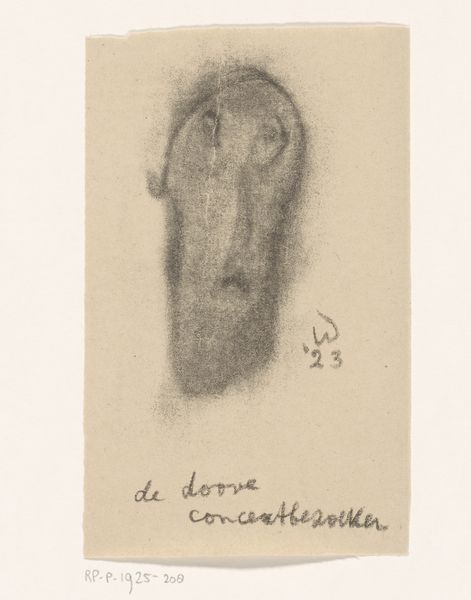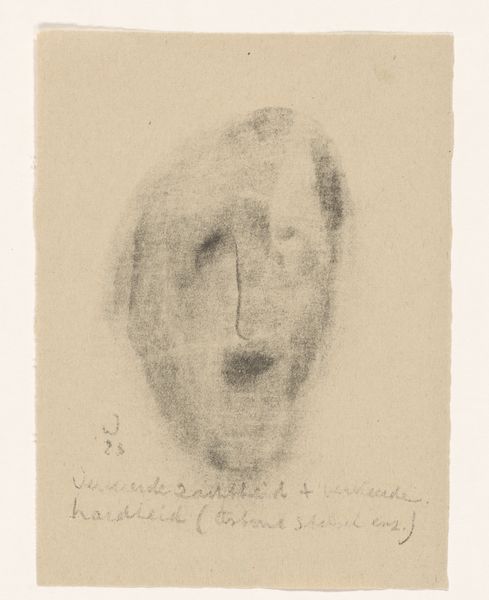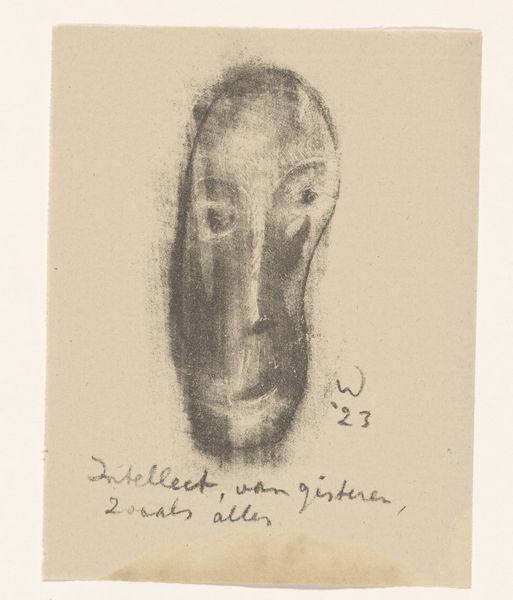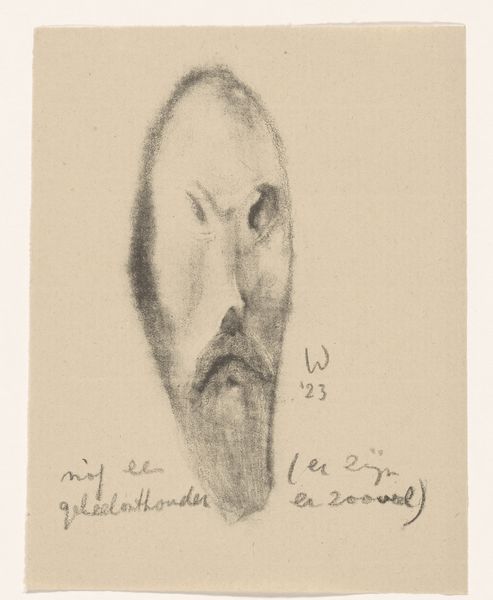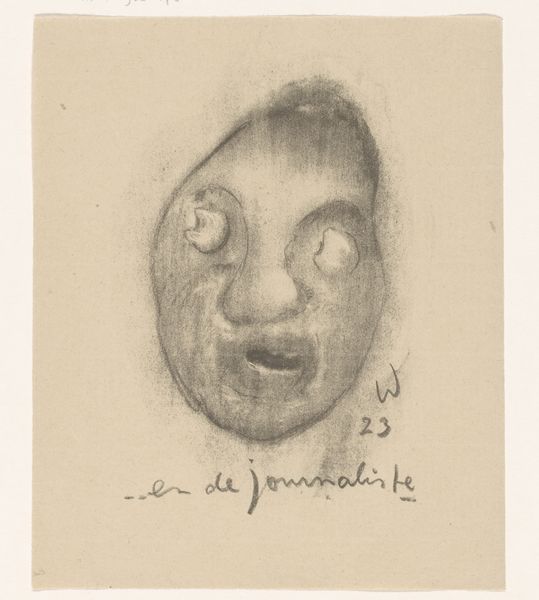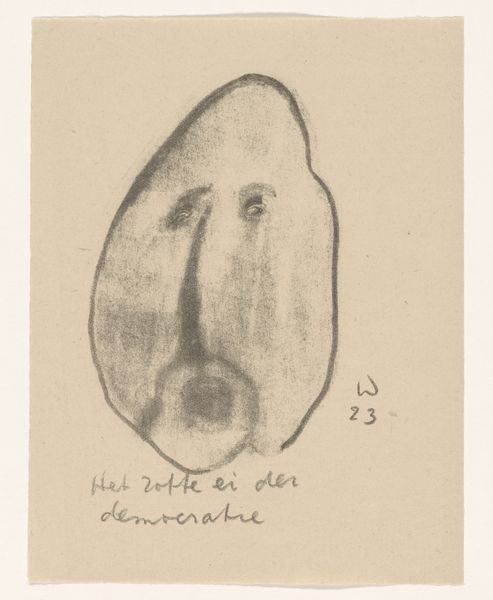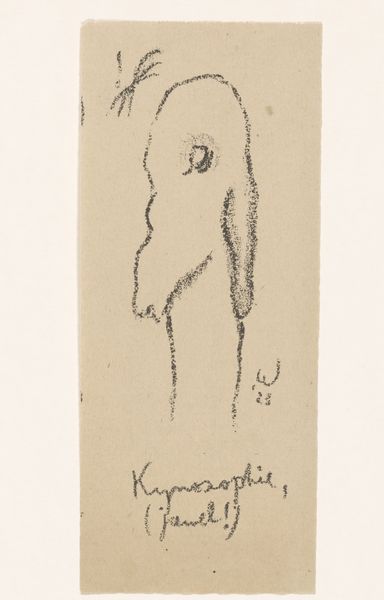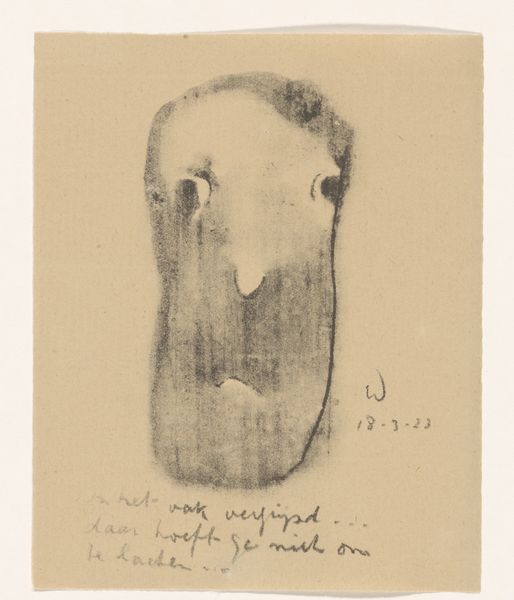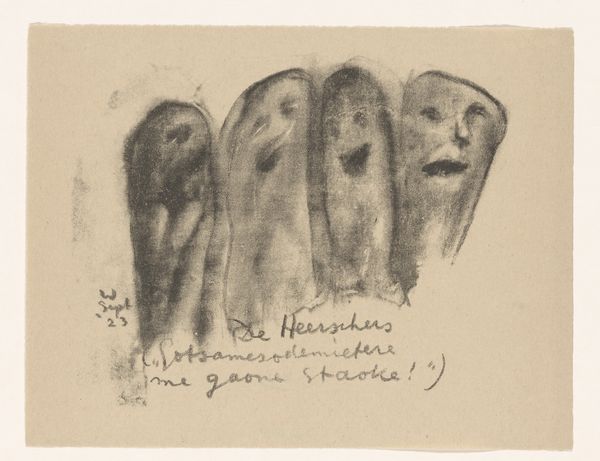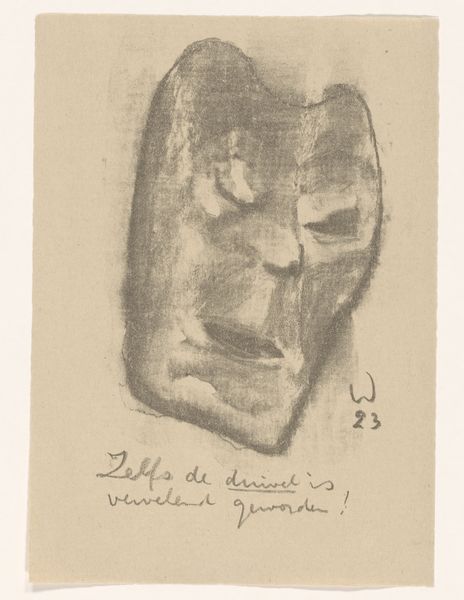
drawing, pencil
#
pencil drawn
#
drawing
#
pencil sketch
#
pencil drawing
#
pencil
#
expressionism
#
abstraction
#
portrait drawing
Dimensions: height 149 mm, width 125 mm
Copyright: Rijks Museum: Open Domain
Curator: This is Erich Wichmann’s pencil drawing “Klassieke tragedie,” created in 1923. Editor: It strikes me as almost mournful, stark even, with that single head rendered in such a simplified form. What are we meant to gather from its appearance? Curator: Its power lies precisely in its simplification. Wichmann's rendering allows the viewer to focus on pure form: the soft gradations of shading, the texture of the pencil on paper, the stark contrast of the light and dark areas that define the facial features. The strategic abstraction pushes beyond any one reading. Editor: But surely, the title gestures at something specific—a "classical tragedy"? Could it be reflecting on the sense of societal collapse and loss that resonated post-World War I? Or, given Wichmann's association with expressionism, might it connect to the anguished portrayal of human suffering inherent within that movement? Curator: These biographical details undoubtedly influence our reading, but remain external. Note, though, how the limited tonal range achieves a depth beyond the constraints of mere representation. There’s a subtle dance between positive and negative space, with the off-white paper supporting the drama enacted by the grayed drawing. Editor: But doesn't neglecting context run the risk of flattening the artwork? The formal elements are undeniably present, yet acknowledging expressionism means grappling with a historically disenfranchised perspective, reflecting anxieties over the fragmentation of identity and societal values following massive political shifts. Curator: Fragmentation may not be explicitly present. Rather, it's the tension between representation and abstraction that creates that unease, those open questions, demanding close examination and introspection. Editor: And, by understanding the artistic context in that post-war period, might we understand not only an image of sadness but also the politics that produced it? Curator: The beauty of its form encourages an encounter with aesthetic questions central to visuality. Editor: Which prompts the broader, and perhaps uncomfortable, questions about why these works resonate still.
Comments
No comments
Be the first to comment and join the conversation on the ultimate creative platform.
